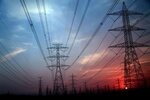News Release from American Clean Power Association (ACP)
Wind Industry Profile of
11/17/2011
This week: AWEA - Wind energy research generates savings for large utility
Reporter David Shaffer writes that Xcel, based in Minneapolis, saved $6 million last year through better advance forecasting of production from the wind farm plants on its system. The improved forecasting, primarily day-ahead, allowed the utility to avoid running fossil-fuel power plants when electricity from wind turbines generation was available.
According to Shaffer, "William Mahoney, program director at the National Center for Atmospheric Research, the prime developer of the system, said it is 35 percent more accurate than previous prediction tools, and builds on decades of atmospheric research by scientists at the Boulder lab, a unit of the National Science Foundation." The forecasting program was developed under contract to Xcel.
If more wind energy is produced than expected, a utility will "curtail" some of the output from a wind farm (order some of the producing wind turbines to shut down) in order to balance supply and demand on its system. Wind farms are very flexible in this regard, and so curtailment can be done more swiftly and easily than ramping up more conventional power plants. But at the same time, it costs money, because the (virtually free) wind-generated electricity that could otherwise be used is wasted. According to Xcel, the new forecasting system has made it possible to cut the amount of curtailment roughly in half.
Better wind forecasting is one of a series of technological innovations in the wind power industry that have been spurred by its rapid growth and the resulting effort by utilities, turbine manufacturers, wind farm operators, and others to find ways to reduce costs. One recent report on the wind industry by Bloomberg New Energy Finance found that land-based wind farms will be "fully competitive" with conventional power plants in five years.
Another, from Lawrence Berkeley National Laboratory (LBNL), found that wind turbine prices have dropped sharply in recent years, due largely to the scaling up of turbine size to reduce cost of energy (COE) and the growth of a domestic supply chain as the U.S. dollar has declined against other major currencies. At the same time, a third analysis, by the nonpartisan Congressional Research Service (CRS), found that wind energy's growth has brought new American manufacturing jobs, but that the industry is threatened by "policy-induced boom-and-bust cycles in investment," such as those that have occurred when Congress has raised taxes on the industry.
For more information on this article or if you would like to know more about what www.windfair.net can offer, please do not hesitate to contact Trevor Sievert at ts@windfair.net
www.windfair.net is the largest international B2B Internet platform – ultimately designed for connecting wind energy enthusiasts and companies across the globe!
According to Shaffer, "William Mahoney, program director at the National Center for Atmospheric Research, the prime developer of the system, said it is 35 percent more accurate than previous prediction tools, and builds on decades of atmospheric research by scientists at the Boulder lab, a unit of the National Science Foundation." The forecasting program was developed under contract to Xcel.
If more wind energy is produced than expected, a utility will "curtail" some of the output from a wind farm (order some of the producing wind turbines to shut down) in order to balance supply and demand on its system. Wind farms are very flexible in this regard, and so curtailment can be done more swiftly and easily than ramping up more conventional power plants. But at the same time, it costs money, because the (virtually free) wind-generated electricity that could otherwise be used is wasted. According to Xcel, the new forecasting system has made it possible to cut the amount of curtailment roughly in half.
Better wind forecasting is one of a series of technological innovations in the wind power industry that have been spurred by its rapid growth and the resulting effort by utilities, turbine manufacturers, wind farm operators, and others to find ways to reduce costs. One recent report on the wind industry by Bloomberg New Energy Finance found that land-based wind farms will be "fully competitive" with conventional power plants in five years.
Another, from Lawrence Berkeley National Laboratory (LBNL), found that wind turbine prices have dropped sharply in recent years, due largely to the scaling up of turbine size to reduce cost of energy (COE) and the growth of a domestic supply chain as the U.S. dollar has declined against other major currencies. At the same time, a third analysis, by the nonpartisan Congressional Research Service (CRS), found that wind energy's growth has brought new American manufacturing jobs, but that the industry is threatened by "policy-induced boom-and-bust cycles in investment," such as those that have occurred when Congress has raised taxes on the industry.
For more information on this article or if you would like to know more about what www.windfair.net can offer, please do not hesitate to contact Trevor Sievert at ts@windfair.net
www.windfair.net is the largest international B2B Internet platform – ultimately designed for connecting wind energy enthusiasts and companies across the globe!
- Source:
- American Wind Energy Association
- Author:
- Posted by Trevor Sievert, Online Editorial Journalist / By Tom Gray, www.awea.org/blog/
- Email:
- windmail@awea.org
- Link:
- www.awea.org/...
- Keywords:
- awea, wind, wind energy, wind turbine, rotorblade, awea, ewea, wind power, suppliers, manufacturers, renewable energy, trevor sievert
All news from American Clean Power Association (ACP)
news in archive
Related News
China, Brazil Partnership
11/21/2024


























